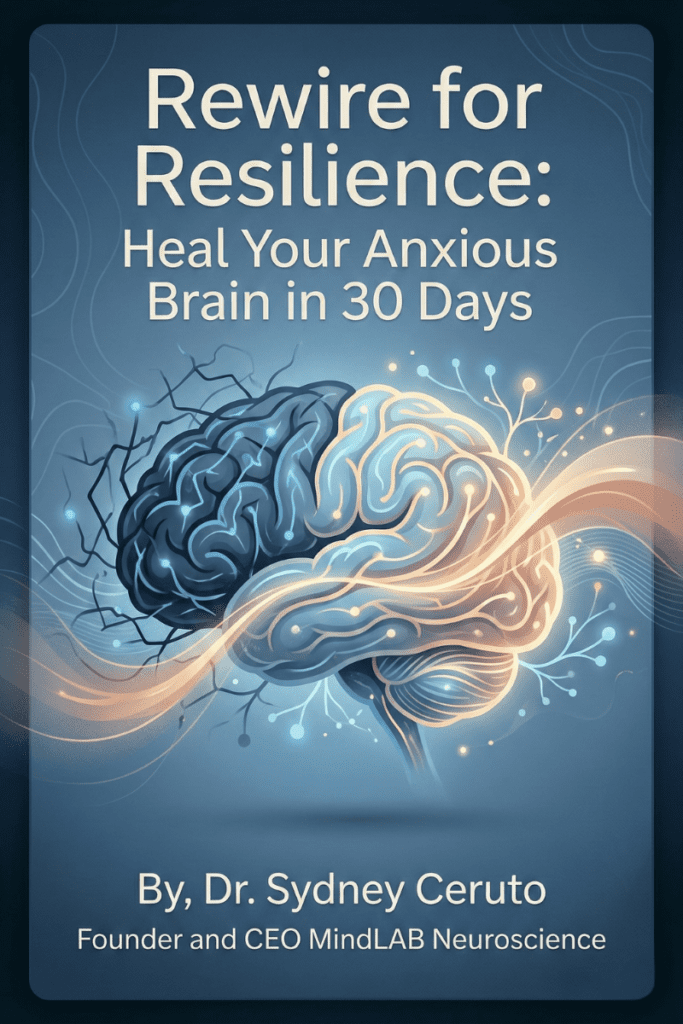There is a moment in every career where technical skill alone is no longer enough. To rise into leadership, to earn trust, and to inspire others, you must cultivate something more elusive: presence.
Leadership presence is the intangible quality that makes people listen when you speak, trust you when you decide, and follow you when you lead. It’s not just about confidence or competence—it’s about creating a sense of psychological safety in the room. People gravitate to leaders who project steadiness, authority, and calm even under pressure, because at a primal level, the human brain is wired to seek security in times of uncertainty.
Too often, presence is mistaken for charisma or personality, as though it is something you are born with or not. But charisma alone is frequently fleeting—it may spark attention, but it does not guarantee long-term credibility.
What truly sustains influence is presence anchored in neurobiology. The neuroscience of presence reveals that what people perceive as confidence or authority is actually the outward expression of finely tuned brain networks. When your prefrontal cortex is regulating emotion effectively, your body language, tone of voice, and decision-making naturally align in a way that others interpret as strength and reliability.
In this sense, presence is not a lucky gift; it is a skill rooted in your nervous system, and it can be cultivated deliberately.
This is where the science becomes transformative. The neuroscience of leadership presence reveals that leaders who can regulate their emotional states influence not only themselves but also the biology of those around them.
Through mechanisms like mirror neurons, your calmness can literally rewire the stress responses of your team, lowering collective anxiety and increasing trust. Similarly, dysregulation—such as rushed speech, a defensive posture, or a scattered focus—triggers unease in others at a subconscious level.
By training your brain to sustain regulation and authenticity under pressure, you not only elevate your own presence but also create an environment where others feel safe to perform at their best. That is why the neuroscience of leadership presence is not an abstract theory—it is a robust framework for career growth, influence, and lasting impact.
Why Leadership Presence Matters More Than Ever
In today’s professional environment, attention has become the most valuable currency. The workplace is saturated with noise—meetings filled with competing voices, presentations fighting against shrinking attention spans, and leadership pipelines overflowing with technically skilled professionals all vying for advancement. In this crowded landscape, it is no longer enough to be competent. To stand out, to influence, and to inspire, you must cultivate resonance, and that resonance is rooted in presence.
Leadership presence is not just about commanding the floor or looking confident. It is about creating a sense of calm authority that others instinctively trust, particularly in times of pressure or uncertainty.
Teams look to leaders not only for direction, but for nervous system cues—signals that communicate whether it is safe to move forward, take risks, or remain steady.
The neuroscience of leadership presence reveals that these signals are not superficial tricks; they originate directly from the way your brain regulates emotions, activates executive function, and communicates coherence through tone, posture, and eye contact.
In moments of volatility, the leader with presence anchors the room, stabilizing energy and giving others the confidence to focus and act.
What makes this so powerful is that presence can no longer be dismissed as a “soft skill.” It is a measurable, trainable capability grounded in neurobiology.
Understanding leadership presence provides a framework for deliberately cultivating credibility, rather than relying on it to develop naturally over time. It explains why some leaders naturally inspire loyalty while others struggle to connect, and it offers practical strategies for shifting your own physiology to project steadiness and authority.
When you internalize these insights, you stop seeing presence as an elusive trait and start recognizing it as the direct outcome of how you regulate your brain and body. In today’s workplace, mastering the neuroscience of leadership is not optional—it is the difference between blending into the noise and commanding the room.

The Brain Networks Behind Presence
When you break it down through the neuroscience lens, the core elements of leadership presence include emotional regulation, body language, vocal tone, and the ability to align your inner state with outward signals of authorityThree key brain systems shape your ability to project presence:
The Prefrontal Cortex: Executive Control
This is the brain’s CEO, governing focus, self-regulation, and decision-making. When you enter a high-stakes meeting, your prefrontal cortex manages competing inputs—your own anxiety, the group’s dynamics, the content you must deliver. Leaders with strong prefrontal activation appear composed because their brains filter distractions and prioritize clarity.
The Limbic System: Emotional Resonance
The limbic system processes emotion, both your own and others’. Presence requires limbic balance: you must regulate your internal stress signals while accurately reading the emotions of those around you. A dysregulated limbic system leaks anxiety into your tone and body language; a regulated one projects calm and empathy.
The Mirror Neuron System: Connection and Influence
Presence is not just about what you feel—it’s about what others perceive. Mirror neurons, located in the premotor cortex and parietal lobes, fire when we observe others’ actions and emotions. When your nervous system is steady, others’ mirror neurons register steadiness. When you project confidence, others feel more confident in you. This is why presence is contagious—it spreads through the brain’s natural wiring for resonance.
Emotional Regulation as the Foundation of Authority
The neuroscience of leadership presence makes one fact clear: authority begins with emotional regulation. If your nervous system is reactive, it shows—in your breathing, your micro-expressions, your voice modulation. People sense this unconsciously and register you as less trustworthy or less in control.
When you regulate effectively, your body signals safety. Your voice steadies, your gestures align with your words, and your brain stays in the prefrontal cortex rather than being hijacked by the amygdala. This is why leaders who appear calm in crises gain followers: their biology projects resilience.
How Stress Hijacks Presence

Stress is the persistent adversary of leadership presence—especially in environments demanding novelty, rapid adaptation, and creative problem-solving.
Neuroscience reveals that when leaders encounter perceived threats, whether through unexpected change or high-stakes innovation, the amygdala responds immediately. This “amygdala hijack” floods the body with cortisol and adrenaline, undermining dopamine-driven states essential for clarity, motivation, and forward-thinking presence.
Instead of leveraging dopamine for creative energy and curiosity, stress redirects neurochemical resources toward survival, shrinking mental bandwidth and impairing nuanced communication.
Under stress, the prefrontal cortex—the seat of executive function, decision-making, and self-regulation—can be overridden. Leaders might notice their focus narrows, verbal fluency drops, and body language becomes defensive, negating the natural openness that supports team engagement, novelty, and creative flow. Even expertise or mastery over content becomes less accessible when chronic stress disrupts dopamine pathways, producing anxiety, rigidity, and risk aversion in place of adaptive, innovative presence.
However, understanding this neurobiological chain provides crucial leverage. Science shows that intentional dopamine regulation, paired with real-time stress management, is key: conscious breathing, power postures, and cognitive reframing not only calm the amygdala but also restore dopamine balance, keeping the prefrontal cortex “online.” Techniques such as mindfulness, short restorative breaks, and environmental novelty can amplify dopamine release, counteracting the stress cycle and enhancing leadership presence. Leaders who learn these skills project confidence, resilience, and authority—regardless of external pressures.
Proactively managing stress through tailored routines—such as incorporating novelty, celebrating small wins, and fostering social connection—protects dopamine reserves and preserves the flexible mindset required for innovation.
In moments of pressure, self-awareness allows leaders to recognize stress symptoms early and take action to recalibrate. This transforms stress from a disruptive force into a stimulus for growth, enabling leaders to sustain presence, cultivate creativity, and drive successful outcomes—even in dynamic, high-stress environments where dopamine and novelty are constantly at play.
Body language is not superficial—it is deeply tied to neurobiology and plays a central role in how others perceive authority and credibility. Every gesture, micro-expression, and shift in posture sends signals to the social brain of those around you.
These signals are decoded instantly and unconsciously, shaping judgments about whether you are confident, trustworthy, and capable of leading. The neuroscience of leadership presence reveals that your nervous system broadcasts far more than your words ever could, and your team often decides whether to follow you before you have spoken a single sentence.
Body language is not superficial—it is deeply tied to neurobiology and plays a central role in how others perceive authority and credibility. Every gesture, micro-expression, and shift in posture sends signals to the social brain of those around you. These signals are decoded instantly and unconsciously, shaping judgments about whether you are confident, trustworthy, and capable of leading. The neuroscience of leadership presence reveals that your nervous system broadcasts far more than your words ever could, and your team often decides whether to follow you before you have spoken a single sentence.
Consider posture: an upright but relaxed stance expands lung capacity, which activates the parasympathetic nervous system. This, in turn, lowers stress signals and conveys a sense of grounded composure to others. In the context of neuroscience and leadership presence, posture is not merely cosmetic—it is neurophysiological. Similarly, slowing your speech rate not only calms your own brain but also entrains your audience’s nervous systems to a steadier rhythm. These micro-adjustments create coherence between your internal state and external projection, making your leadership presence both authentic and effective.
When viewed through the lens of neuroscience, leadership presence is not just about memorizing power poses or adopting artificial behaviors. It is about aligning your physiology with your intention, so that your presence radiates naturally. Leaders who ignore body language often sabotage their influence without realizing it, leaking anxiety or doubt through subtle cues. But those who master the neurobiology behind their gestures, tone, and breathing harness presence as a silent form of leadership—one that inspires trust, stabilizes teams, and amplifies authority.
The Hidden Neuroscience of Leadership Presence in Silence
If body language communicates power, silence magnifies it. One of the most provocative insights from the neuroscience of leadership presence is that silence, when wielded intentionally, can be as influential as speech.
In high-stakes situations, many professionals rush to fill gaps with words, fearing that pauses signal uncertainty. Yet neuroscience demonstrates that silence, accompanied by calm body language and steady eye contact, communicates confidence and control.
This is where the neuroscience of leadership presence becomes especially fascinating. Silence regulates group dynamics by slowing down the pace of interaction, allowing mirror neurons to synchronize and stress levels to drop—leaders who can pause without panic tap into one of the most underutilized forms of influence. Instead of appearing weak, they project mastery: the ability to hold attention not through force but through steadiness.
The paradox is powerful—when you understand the neuroscience of leadership presence, you realize that doing less often achieves more. A deliberate pause before answering a question, a moment of silence after a decisive statement, or simply holding presence at the head of the table without speaking, all trigger subconscious recognition of authority.
In a world obsessed with noise and constant talking, silence—backed by regulation—becomes the most provocative and credible form of leadership presence.
Voice as a Neurological Signal
Your voice is one of the most potent indicators of presence. Pitch, pace, and resonance all transmit neurological cues. A rushed, high-pitched voice signals anxiety; a steady, modulated tone signals regulation and authority.
This is not about theatrics. When you control your breath, your vagus nerve calms, which lowers stress hormones and steadies your vocal cords. Your voice then carries not just words, but the signal of a regulated nervous system. Audiences don’t just hear confidence—they feel it.
Presence and the Social Brain
Humans are social animals, and leadership presence activates the social brain. The anterior cingulate cortex, insula, and mirror neuron system collaborate to assess social cues.
When you demonstrate empathy—listening fully, nodding, reflecting emotions—others’ social brains reward you with trust.
Presence is therefore not dominance. It is alignment: aligning your internal state with the needs of the group, and aligning your signals with authenticity. The neuroscience of leadership presence shows that people follow those who make them feel safe, seen, and steady.

Cultivating Leadership Presence Through Neuroscience
1. Train Your Prefrontal Cortex
Strengthen executive function through mindfulness, focused attention, and strategic planning. The stronger your prefrontal cortex, the less likely you are to be derailed by stress.
2. Regulate Before You Communicate
Before a presentation or meeting, take 60 seconds to regulate your physiological state. Breathe deeply, lower your shoulders, and ground your feet. These actions quiet the amygdala, helping you cultivate your presence.
3. Align Voice and Body
Practice delivering content with steady pacing and natural pauses. Align gestures with speech. This creates congruence, which the brain interprets as a sign of credibility.
4. Leverage Mirror Neurons
Remember that others reflect your state. Project calm by embodying it yourself. Presence spreads through neurological contagion.
5. Practice Relational Awareness
Presence is not just internal; it’s relational. Notice how others respond and adjust accordingly. Leaders with presence are not self-focused—they are group-focused, attuning to collective emotion.
The Science of Charisma vs. Presence
Charisma is often described as magnetic energy, but it can be surface-level. Presence, by contrast, is sustainable because it is rooted in neurobiology. Charisma can attract attention, but presence sustains trust. The neuroscience of leadership presence clarifies that people follow leaders not for flash, but for steadiness and resonance.
Building Habits That Strengthen Presence
Leadership presence is not an act—it is a practice. Habits shape the nervous system, and consistent practice builds automatic regulation.
- Daily grounding: Begin your day with two minutes of deep, slow breathing to regulate your vagus nerve.
- Feedback loops: Ask colleagues how you feel about your presence in meetings. Self-awareness and social feedback align perception with intention.
- Micro-recovery: Insert small breaks between tasks to reset the nervous system. This prevents stress accumulation that erodes presence.
- Reflective practice: At the end of each day, reflect on one moment where you projected presence and one where you lost it. Awareness rewires response.
- Daily grounding: Begin your day with two minutes of deep, slow breathing to regulate your vagus nerve.
- Feedback loops: Ask colleagues how you feel about your presence in meetings. Self-awareness and social feedback align perception with intention.
- Micro-recovery: Insert small breaks between tasks to reset the nervous system. This prevents stress accumulation that erodes presence.
- Reflective practice: At the end of each day, reflect on one moment where you projected presence and one where you lost it. Awareness rewires response.
The Future of Leadership Presence
In an era of hybrid work and digital communication, presence must adapt. Video calls challenge body language cues, but neuroscience still applies: posture, eye contact with the camera, vocal modulation, and intentional pauses still project authority. Even virtually, the neuroscience of leadership presence guides how others experience you.
As careers evolve, technical expertise will remain necessary, but presence will increasingly determine advancement. Leaders who understand their own neurobiology and cultivate presence deliberately will stand out—not because they demand attention, but because they naturally command it.
Key Takeaways from This Article
- Leadership presence is not a matter of personality—it is a matter of neurobiology.
- The prefrontal cortex, limbic system, and mirror neurons are central to the neuroscience of leadership presence.
- Emotional regulation is the foundation of authority; without it, stress can hijack one’s presence.
- Body language and voice transmit neurological signals that influence trust and credibility.
- Presence spreads through mirror neurons—others reflect your state.
- Presence can be cultivated through deliberate habits, feedback, and regulation practices.
#NeuroscienceOfLeadershipPresence #Leadership #ExecutivePresence #CareerGrowth #BrainScience #ProfessionalDevelopment #Authority #EmotionalRegulation





